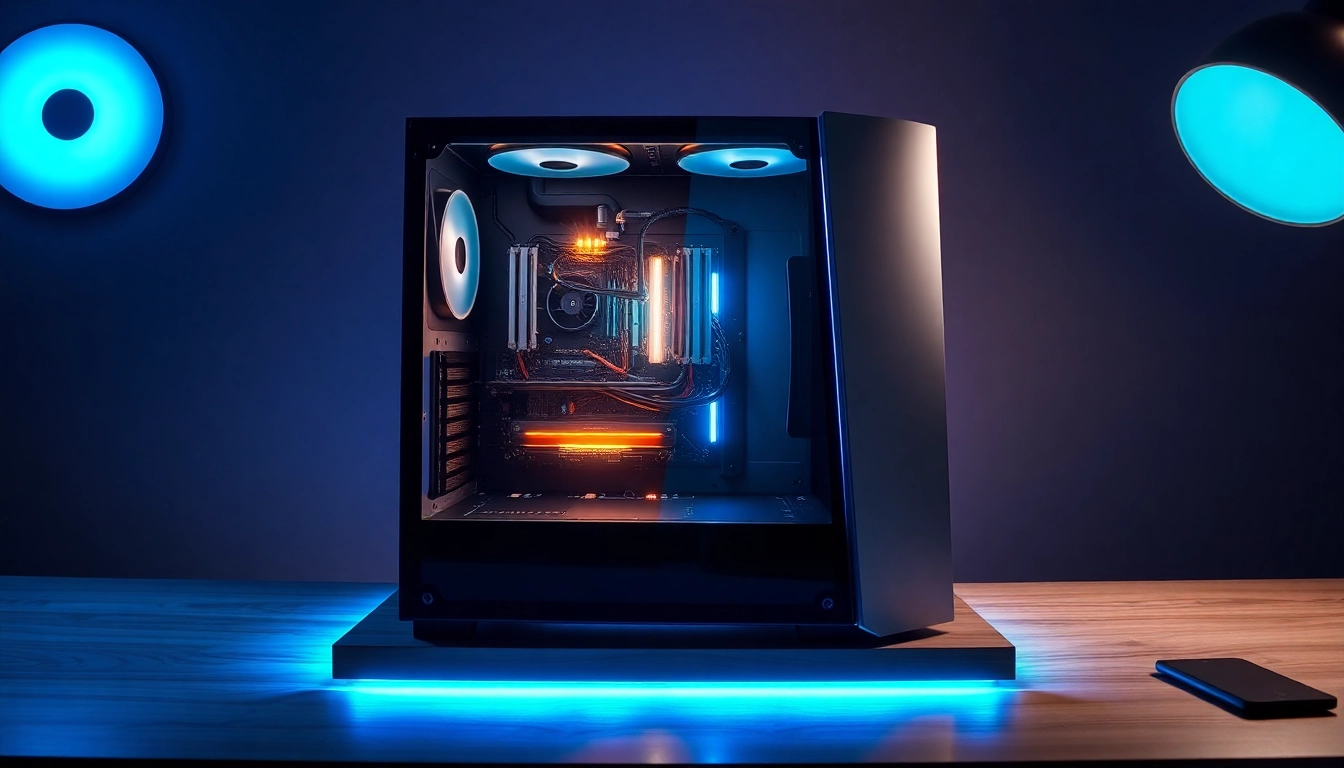Understanding Icons: Their Importance and Functionality
In the world of digital design, icons serve a crucial role. They are not merely decorative elements; they are fundamental tools for communication, bridging the gap between users and digital interfaces. Icons simplify complex information, enhance user experience, and contribute to branding. As compact visual representations, icons convey meaning instantly and effectively, making them indispensable in both web and mobile applications.
The Role of Icons in Digital Design
Icons act as visual shorthand, enabling users to navigate through content and functionalities without a heavy cognitive load. Designers often employ icons to enhance the clarity of actions, such as ‘home’, ‘settings’, or ‘search’, allowing users to associate functions with familiar symbols. This intuitive understanding can drastically improve usability and adoption rates of applications.
Moreover, icons contribute significantly to the aesthetics of a design. A well-crafted icon set can elevate the visual appeal of a website or application, making it more engaging and enjoyable for the user. Balancing these visual elements with functionality is vital, as the primary purpose of any icon is to facilitate interaction, not just to look good.
Types of Icons and Their Applications
Icons can be categorized into several types based on their application:
- Action Icons: Represent actions the user can perform, such as a ‘play’ button, ‘delete’ symbol, or ‘upload’ icon.
- Navigation Icons: Assist in guiding users through an application or website, including arrows, home, and map symbols.
- Content Icons: Indicate types of content or media, like document, image, or video file icons.
- Brand Icons: Represent specific brands or services, crucial for brand recognition, such as social media or app logos.
Each type of icon serves a distinct purpose and, when properly integrated, can enhance the overall user interface significantly.
Why Quality Matters in Icon Creation
The quality of icons can determine not only the aesthetic appeal of an application but also its usability and credibility. Poorly designed icons can confuse users and lead to a frustrating experience. In contrast, high-quality icons with a unified style and clear symbolism can enhance user trust and engagement.
Effective icon design requires an understanding of not just design principles, but also the needs and contexts of the end-users. Quality icons are easy to recognize, scalable for various screen sizes, and suitable for both light and dark themes. Investing time in icon creation can pay dividends in user satisfaction and retention.
Exploring Icon Design Principles
Fundamentals of Iconography
Iconography refers to the creation and study of icons and their meanings. It is essential to stay true to the principles of icon design which include clarity, simplicity, scalability, and recognizability. An effective icon should communicate its purpose at a glance, avoiding intricate designs that could obscure its message.
When creating icons, designers should also consider the cultural significance and usability across diverse audiences. For example, a check mark may indicate confirmation in many cultures, but interpretations can vary, necessitating research before finalizing designs.
Balancing Aesthetics and Usability
When designing icons, balancing aesthetics with usability is fundamental. While icons should be visually appealing to attract users, their primary role is to convey information and guide actions. Icons must be distinguishable and immediately understandable, even in a compact format.
Designers often create multiple iterations of an icon, testing how well it conveys its intended meaning and whether users can identify the function easily. By deriving feedback and making adjustments, designers can develop icons that fulfill both aesthetic and functional criteria.
Color Theory in Icon Design
Color plays a pivotal role in icon design, as it influences user emotions and perceptions. The effective use of color enhances visibility, establishes brand identity, and guides users’ attention. For instance, red often signals caution or alerts, while green indicates confirmation or success.
Designers should employ contrasting colors to distinguish icons from their backgrounds, ensuring they stand out and are easily recognizable. Consistent usage of color across a set of icons helps maintain a coherent look and feel, contributing to overall brand identity.
Popular Icon Design Tools and Resources
Essential Software for Creating Icons
Numerous software applications are available for designing icons, ranging from professional tools to user-friendly applications suitable for beginners. Some of the most popular options include:
- Adobe Illustrator: A powerful vector graphics editor that offers extensive tools and options for icon design.
- Sketch: A versatile design toolkit that is popular among UX/UI designers for its ease of use and collaboration features.
- Affinity Designer: A budget-friendly alternative to Adobe, offering advanced tools for vector and raster graphics.
- Figma: A web-based design tool that allows for real-time collaboration and is gaining popularity for UI design projects.
Choosing the right tool depends on the designer’s skill level, project requirements, and budget. Each tool has unique features that cater to different aspects of the design process.
Online Libraries for Icon Inspiration
For designers seeking inspiration, online libraries provide vast collections of icons spanning various styles and themes. Platforms like Flaticon, Icons8, and The Noun Project offer extensive libraries, providing designers with the necessary tools to discover and curate the perfect set of icons for their projects.
While browsing these libraries, it can also be beneficial to analyze current trends in icon design, noting how color, shape, and context influence user interaction and overall design appeal.
Resources for Downloading Free Icons
Many designers rely on free icon resources to save time and resources in their projects. Websites like Freepik, Iconfinder, and IconArchive offer downloadable icons suitable for a variety of applications.
However, it is essential to verify the licensing terms, as some icons may require attribution or only be available for personal use. Carefully reviewing these conditions ensures the icons can be used effectively in commercial or client projects.
Best Practices for Icon Integration
Placing Icons in UI/UX Design
The placement of icons within user interfaces can significantly impact usability and user experience. Icons should be strategically positioned in a way that aligns with users’ expectations, such as placing navigation icons at the top or bottom of pages or using action icons adjacent to relevant text.
Consistency in placement can help users develop muscle memory, allowing them to navigate more confidently and efficiently. Additionally, providing adequate spacing around icons prevents clutter and enhances aesthetic appeal.
Ensuring Accessibility in Icon Usage
Accessibility is a fundamental aspect of design, and icons must be designed with inclusivity in mind. This involves ensuring that icons are recognizable by users with visual impairments or other disabilities. Utilizing sufficient color contrast, alternative text descriptions, and incorporating haptic feedback can accommodate various user needs.
Incorporating users’ feedback during the design process further ensures the icons are accessible and effectively communicate their intended meaning across diverse audiences.
Responsive Design Considerations for Icons
With the increasing variety of devices and screen sizes, responsive design has become critical in icon integration. Icons should be designed to adapt to different resolutions, maintaining clarity and recognition at any size.
Responsive design principles encourage designers to create adaptive icon sets that retain functionality while optimizing the user experience across devices, from smartphones to large desktop monitors.
Future Trends in Icon Design
Emerging Styles and New Technologies
The field of icon design continues to evolve with the advent of new technologies and trends. The rise of flat design and minimalism led designers to favor simplified icons that emphasize functionality over ornamental elements.
Additionally, the emergence of augmented reality (AR) and virtual reality (VR) interfaces presents exciting opportunities for innovative icon designs that seamlessly integrate with these technologies, providing user experiences that are disruptive yet engaging.
Adapting Icons for Mobile and Web Interfaces
As mobile usage continues to dominate, icons are evolving to fit mobile-specific design paradigms. This includes considerations for touch interactions, such as larger icons that are easier to tap. Icon designs are increasingly flexible, often unifying mobile and web experiences while maintaining context-sensitive visuals.
Testing icons across various platforms helps ensure that they function effectively in different user environments, adapting to both mobile and web interfaces consistently.
Personal Branding Through Icon Customization
Customized icons allow organizations and individuals to establish unique brand identities that resonate with their target audiences. By tailoring icons with specific graphics, colors, and styles, brands can effectively convey their messages and values.
Strategic customization often involves collaborating with professional designers who can interpret brand narratives into visual language, ensuring a distinctive presence in an overcrowded digital space.
In conclusion, icons play an essential role in modern digital design, aiding communication, improving user experience, and contributing to branding. By understanding their significance, applying effective design principles, analyzing popular tools and resources, and embracing future trends, designers and businesses can harness the true potential of icons in their projects.



